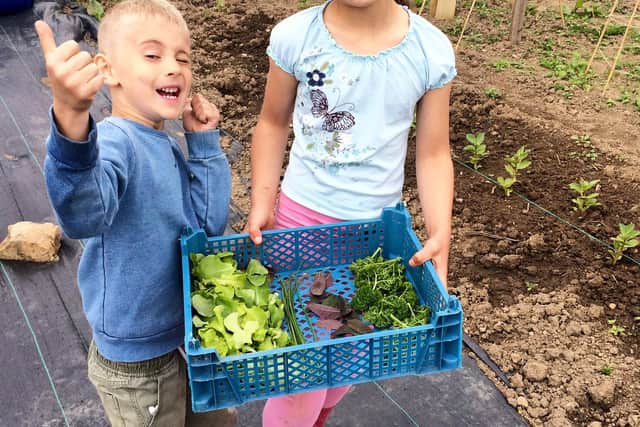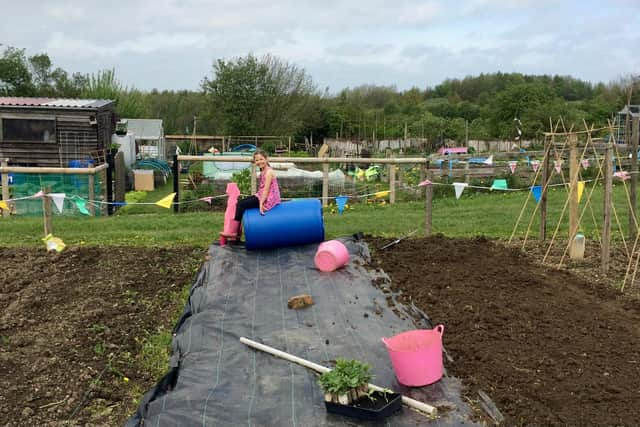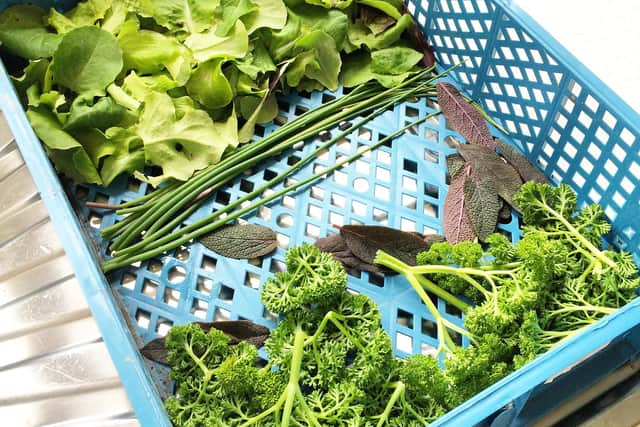Derbyshire allotment holder says 'don’t be discouraged - you’re not too late!'
and live on Freeview channel 276
Experienced gardeners on social media may be already showing a sea of seedling trays ready for their kitchen garden.
Many of which have been carefully nurtured with grow lights and heated propagators during the winter.
Advertisement
Hide AdAdvertisement
Hide AdOur message would be, don’t be discouraged! You’re not too late! It’s the perfect time to start seedlings off on a windowsill or perhaps sow potatoes into the ground or a grow bag.


Broad beans are a lovely size for little fingers to help with and can go straight outside now.
Radish are really easy to grow in a bed or planter, and results are seen quickly, which can be encouraging when gardening with children.
Children love to grow sunflowers, but we find the complete journey from seed packet to plate to be the most rewarding.
Advertisement
Hide AdAdvertisement
Hide AdConsider taking edibles such as carrots or lettuce from sowing, nurturing and harvesting all the way through to cooking or throwing in a salad, don’t forget to compost the unused bits.


If you’ve recently taken on an allotment, we’d recommend drawing a plan of how you’d like your plot to look first. The average allotment is 250sqm, so there’s quite a bit of space to play with.
Perhaps read up on crop rotation and make a note of any sunny/shaded areas.
Taking a notebook to your growing space can be helpful, as can keeping a diary (we use Instagram and our blog for this). Then prepare perhaps just one or two beds, get them filled with crops and then move onto your next patch.
Advertisement
Hide AdAdvertisement
Hide AdIt can be very tempting to spend weeks preparing your whole plot, only to find you have neglected to get any veg into the ground. In our first allotment year, we found it helpful to cover half the plot with a weed-suppressing membrane; by the time we had filled the open half, the weeds in the covered part had died.


In hindsight, I would have used brown cardboard from the start to cover the beds (with all tape, staples and address info’ removed).
Local shops and businesses are often happy to give waste cardboard away, free.
If you have access to compost or manure, this can be spread on top of the cardboard, and the ‘no dig’ method can be used to create rich, weed-free soil for your plants.
Advertisement
Hide AdAdvertisement
Hide AdOther organic matter such as grass clippings can also be added to layer up your beds. Worms are simply amazing creatures that will pull the material into the soil as the cardboard rots.


Finding patience in our veg growing has taken time. We found it difficult at first as we wanted to know it all and grow it all!
We are still learning, but each year become a little more successful with our harvest and accepting of the fact that you win some and you lose some!
Good luck, everyone!
Sarah, Justin, Savannah and Louis.
www.diggingtheearth.org.uk